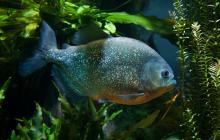Relative humidity
Relative humidity is another important factor influencing orchids' growth. Orchids usually require fairly high humidity levels.
In summer, the relative humidity should be about 70% during the day and 40% at night, and 50% during the day and 30% at night in winter. It is not always easy to obtain such conditions indoors, however.
To increase the relative humidity around your plants, place them on a bed of gravel in a water-filled saucer. Place the pot on the gravel, but do not allow the water to touch the pot, to avoid problems with root rot. A humidifier will also give excellent results.
| Relative humidity percentage | ||
|---|---|---|
| Season | % RH | |
| Day | Night | |
| Summer | 70% | 40% |
| Winter | 50% | 30% |
Fertilizer
Fertilizer is needed only during the active growing period, until flowers appear, from about February to late October.
Orchids grow slowly and appreciate dilute fertilizer at regular intervals. To avoid burning the roots, chemical fertilizers should be diluted to one-quarter to one-half the recommended strength. There is no need to dilute natural fertilizers. Accumulated mineral salts may be flushed as necessary with fresh water.
During the period of active vegetative growth until floral initiation begins (February to mid-August), use a nitrogen-rich fertilizer (NPK ratio: 2-1-1).
During the floral initiation period (mid-August to late October), use fertilizer that is high in phosphorus (NPK ratio: 1-2-1) alternately with balanced fertilizer (NPK ratio: 1-1-1).
Once the flower spike appears, monthly feeding with balanced fertilizer (NPK ratio: 1-1-1) is sufficient. Once the buds open, stop feeding the plant until vegetative growth resumes in spring.
Flower spike
The flower spike on an orchid should be cut back to its base after the plant has finished flowering.
There is a single exception to this rule: a Phalaenopsis may reflower if the spike is trimmed back to beneath the faded blooms and above a latent node (see the diagram). This should be done only once, to avoid weakening the plant.

Illustration: Espace pour la vie/Audrey Desaulniers







